A year on from qualifying for the UEFA Conference League, UEFA’s third European competition after the Champions League and the Europa League, Silkeborg IF surprisingly dropped into the relegation round of this year’s Danish Superliga after missing out on the championship round by one point. This was made even more surprising due to the fact that the side had scored the third most goals in the division, with 34, at the end of the regular season. In addition to this, they have had the most final third entries as well as the most progressive passes in the league.
In regards to their principles and tactics as well as the data, it is clear to see that Silkeborg IF are a very efficient attacking team. However, despite their effective attack, the side have conceded more goals than they have scored in both the regular season as well as the relegation round.
This scout report looks to provide a tactical analysis of Silkeborg’s tactics and attacking principles, and how these principles lead to the creation of goalscoring chances. Furthermore, this analysis will look to touch on Silkeborg’s frailties in defence and look to suggest possible reasons why the side have experienced problems at the back.
Structure and principles in attack
Silkeborg for the majority of the season have lined up in a 4-3-2-1 on paper. However, in possession, the side form a box midfield with two of their midfielders forming a double pivot in close proximity to one another, and their attacking midfielders positioned further up the field with a larger distance between the two. The third midfielder in the formation, which this season has been Anders Klynge, also pushes further up the field and may drift into more central areas or towards the wide area.
The full-backs of the side are often very advanced in the wide areas, pushing up as far as the opposition’s backline at times in order to provide width to the side. This can be seen in the example below. From this, Silkeborg look to progress the ball through the use of vertical passes in the centre of the pitch.
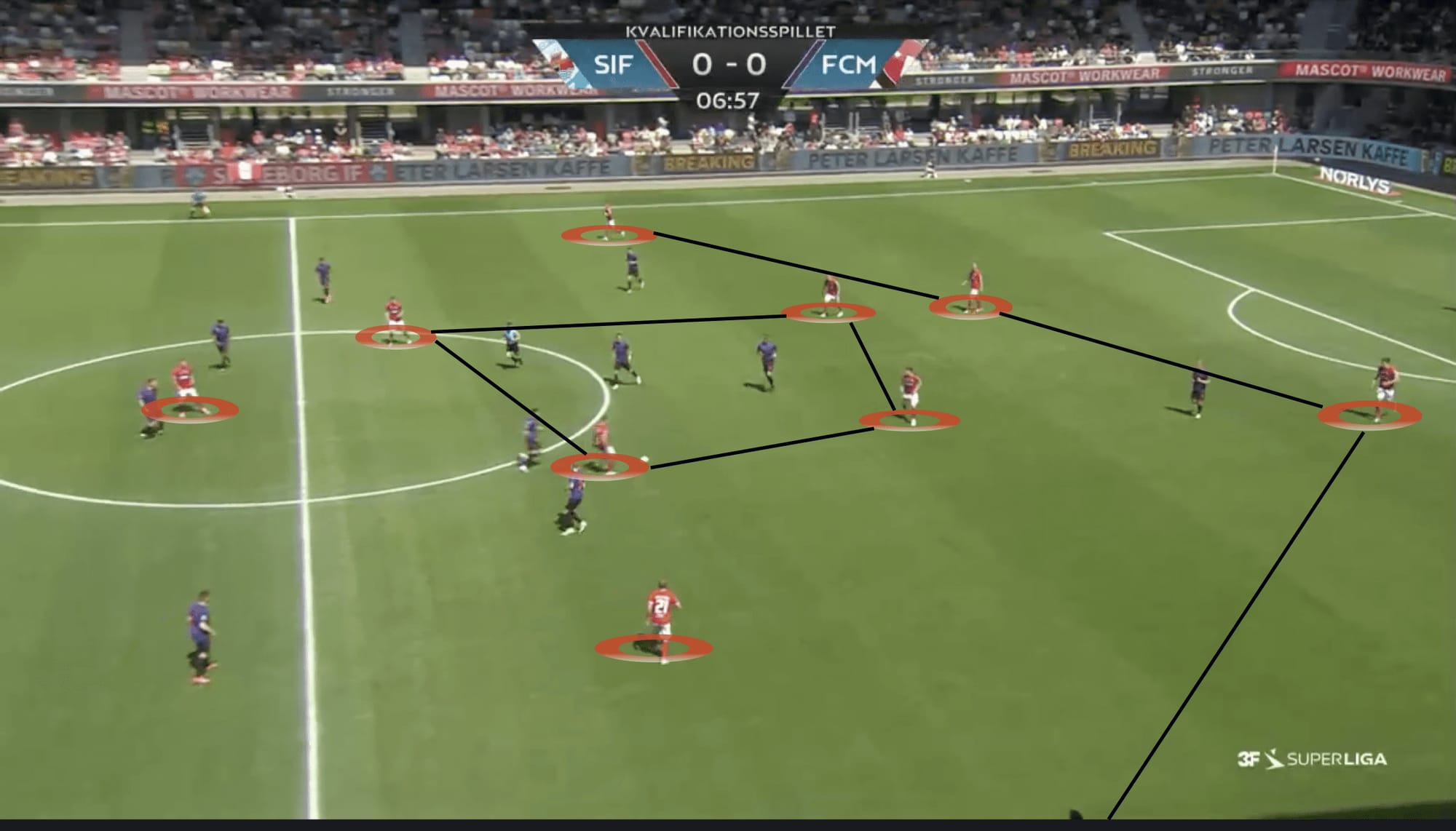
Silkeborg’s modified structure as well as their use of vertical passing through the centre is similar to that of Roberto De Zerbi’s Brighton. However, it would be unfair to state that the side completely executes actions in the same manner as the Premier League side. The example below looks to show how the side’s structure, as well as their principles, create opportunities to progress the ball and destabilise the opposition.
The first issue faced by the opposition is the Silkeborg double pivot of Pelle Mattson and Mark Brink. Due to their close proximity, they are both in positions to support the centre-back on the ball as well as provide support to one another after a vertical pass is played to either of them. As in the example below, if the opposition looks to orient their position to the double-pivot too closely, they leave space for one of the other centre-backs to receive the ball in wider areas and progress the ball further up the pitch, withering play towards the centre or wide area.
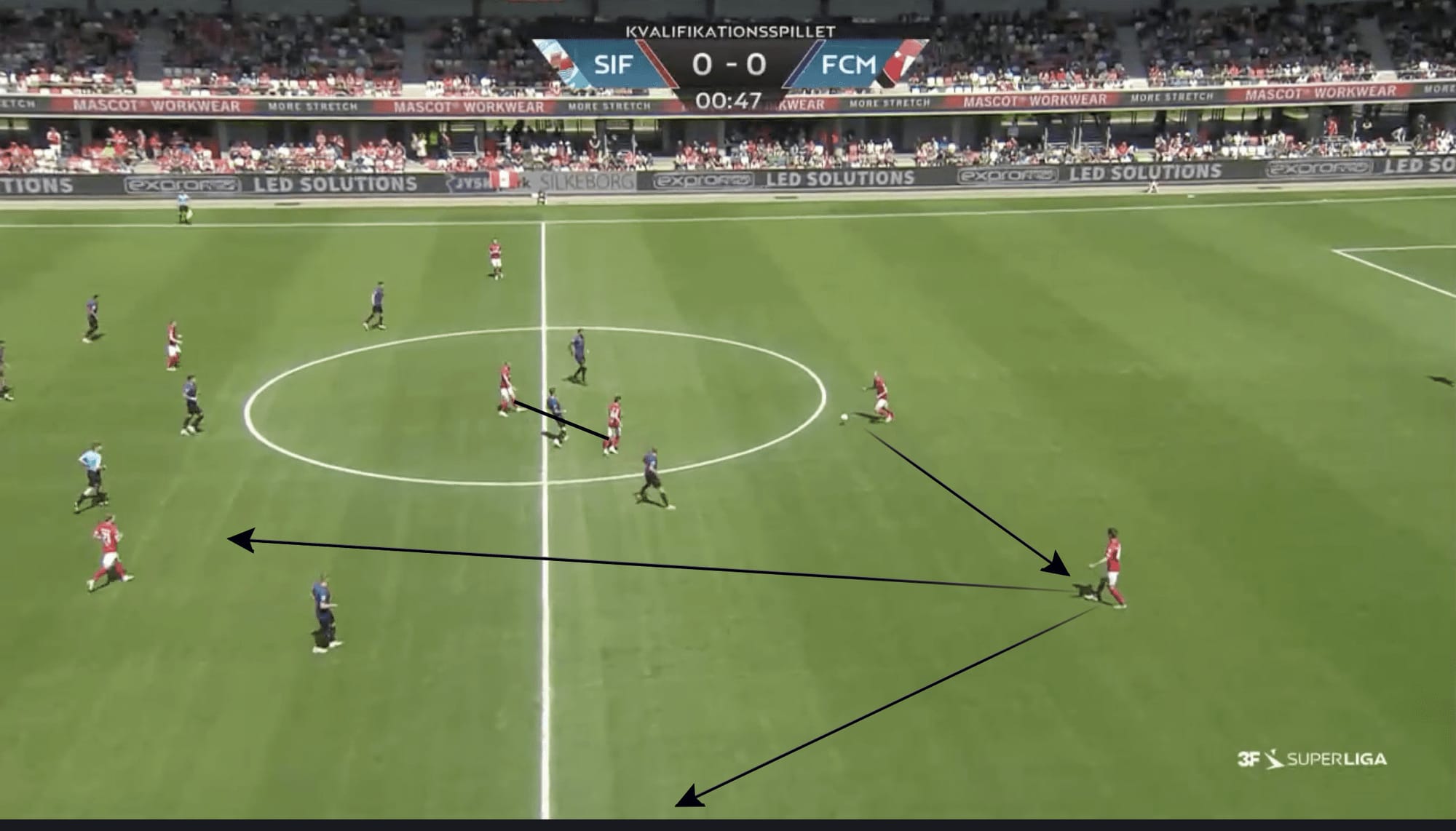
Furthermore, the double pivot is extremely adept at creating passing lanes for players further up the pitch. In the same example as previously, once Brink receives the ball, he moves to his left to create a passing lane for Flynge, positioned centrally, further up the pitch. Due to the two attacking midfielders as well as Flynge, Silkeborg are often able to overload the second line of the opposition’s defence.
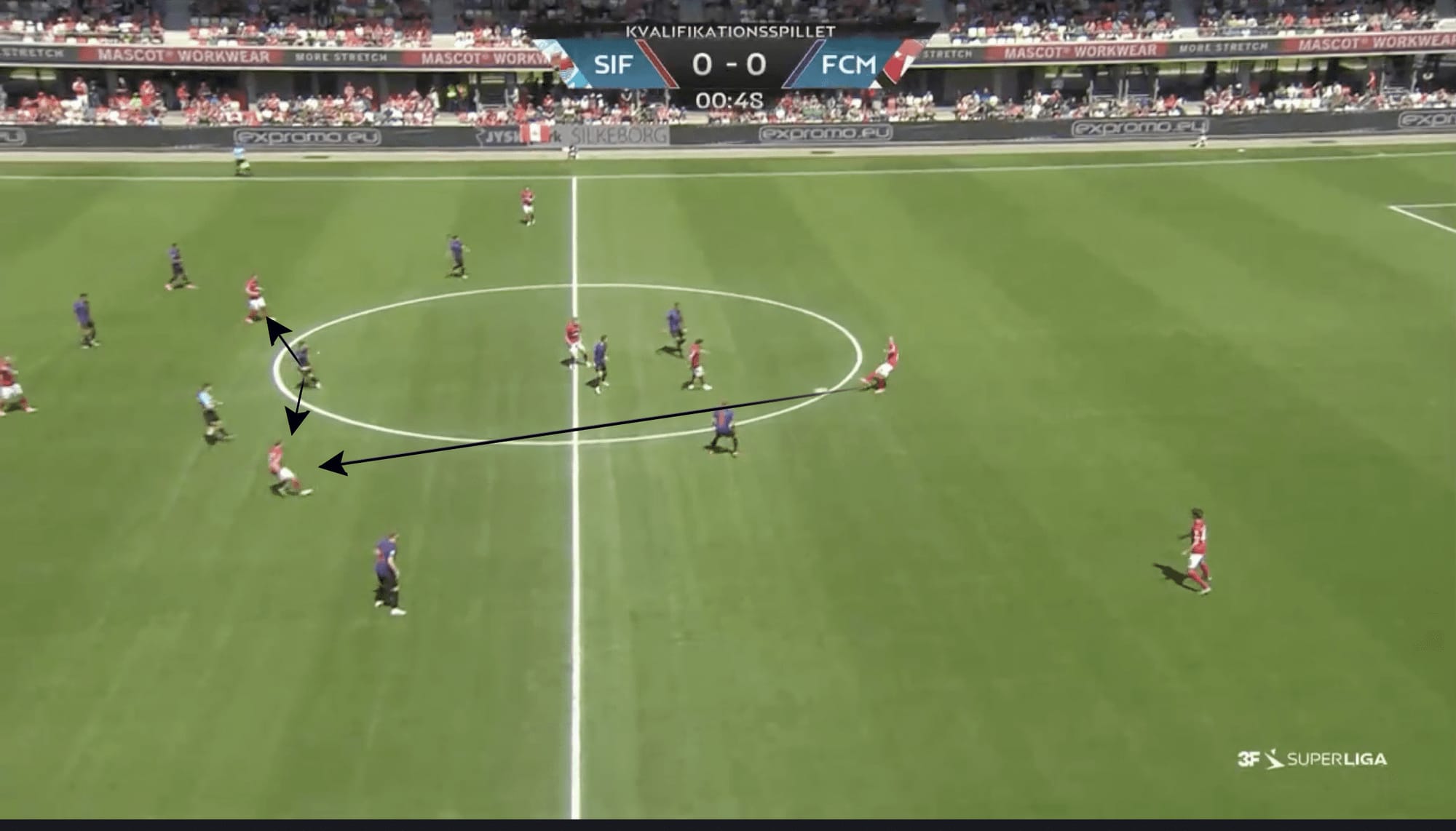
Moments later, after Flynge receives the ball, a dilemma that the two attacking midfielders cause for the opposition can be seen below. Due to their advanced and relatively central positions, opposition full-backs often have to adjust their positions in order to be able to cover the attacking midfielders. As a result, Silkeborg’s full-backs are often able to receive the ball in the wide areas in acres of space.
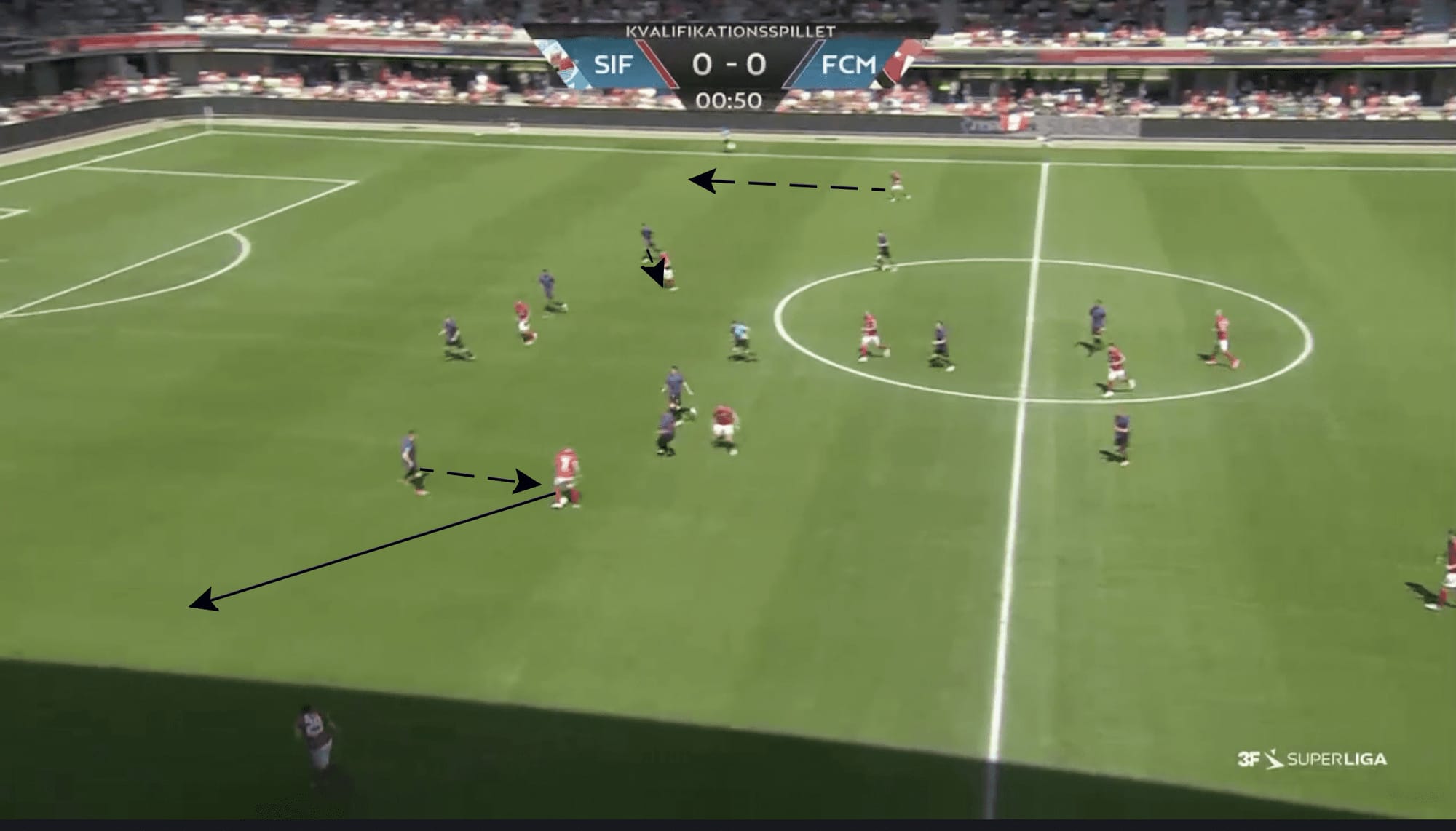
From these positions, the full-backs look to provide crosses and cut-backs for players entering the box.
In circumstances where the opposition full-back does look to press one of the Silkeborg full-backs, cover is reduced in the backline of the opposition. This can be seen in the example below with a pass played to Lukas Engel, the left-back. Engel then looks to play the ball to Kaper Kusk in the centre who then plays a through ball to the striker.
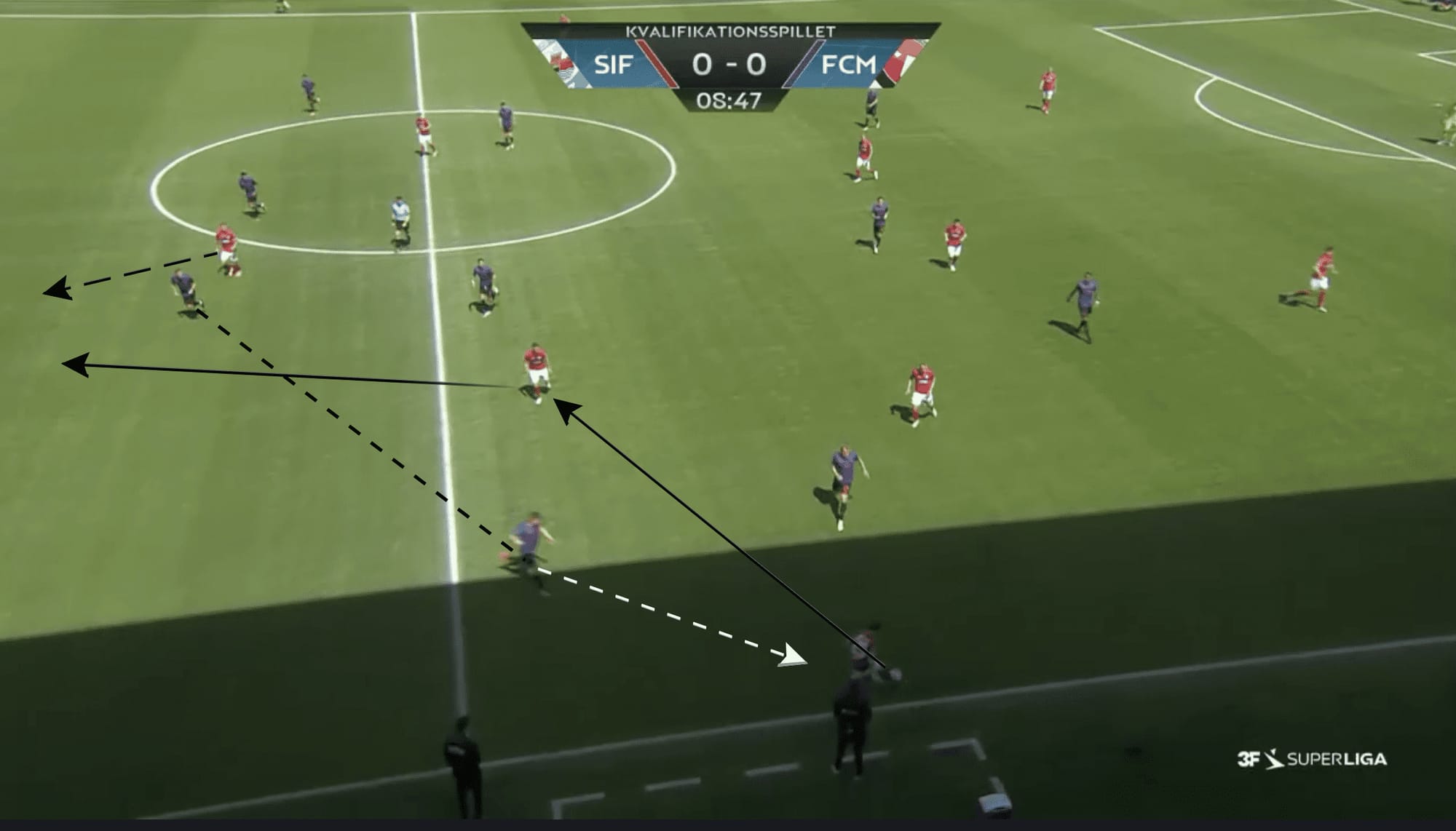
An additional aspect that aids Silkeborg in creating chances is their players’ awareness in regard to making runs and exploiting reductions in opposition cover. This can be seen in the example below, in a similar scenario to the one above. After Engel receives the ball out wide, this time in a more advanced area, the opposition full-back looks to press the Silkeborg left-back. In doing so, space is created between the opposition full-back and centre-back, which Kusk looks to exploit and receive the ball.
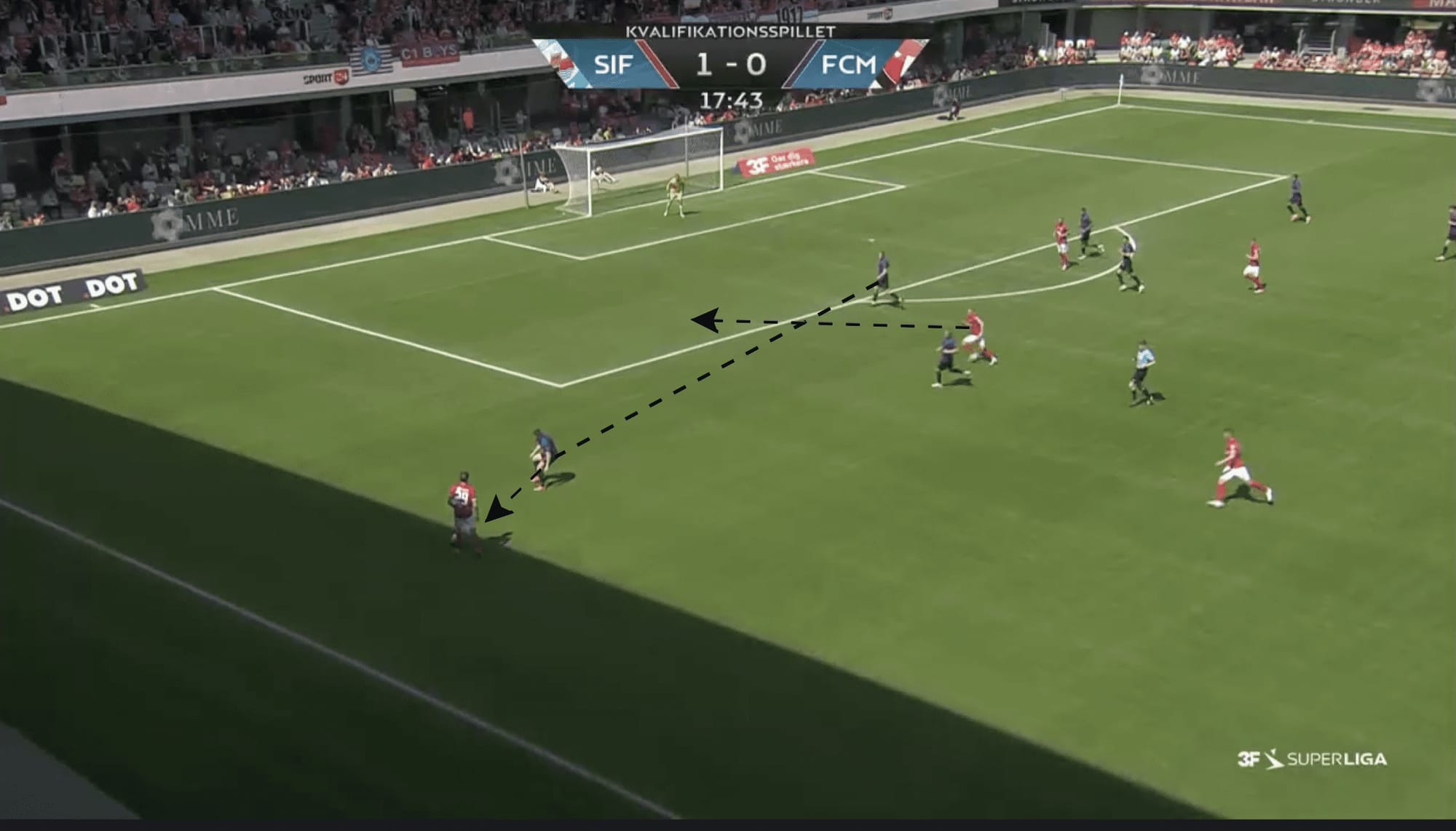
Silkeborg have also used a back three in possession, with Brink dropping between the two centre-backs and the third midfielder dropping deeper to form a double pivot which can be seen below. Silkeborg’s main means of progression is through the centre, and even when the ball is played to the wide areas, players in the wide areas will look to play the ball to options in the centre. As a result, the opposition may look to completely nullify this threat and adjust their positions in order to close off central options.
Using a back three, Silkeborg become less reliant on playing through the centre from deeper areas and can use their centre-backs to advance the ball. This allows them to take advantage of the opposition’s positioning and allows them to access the attacking midfielders in the centre through a different angle.
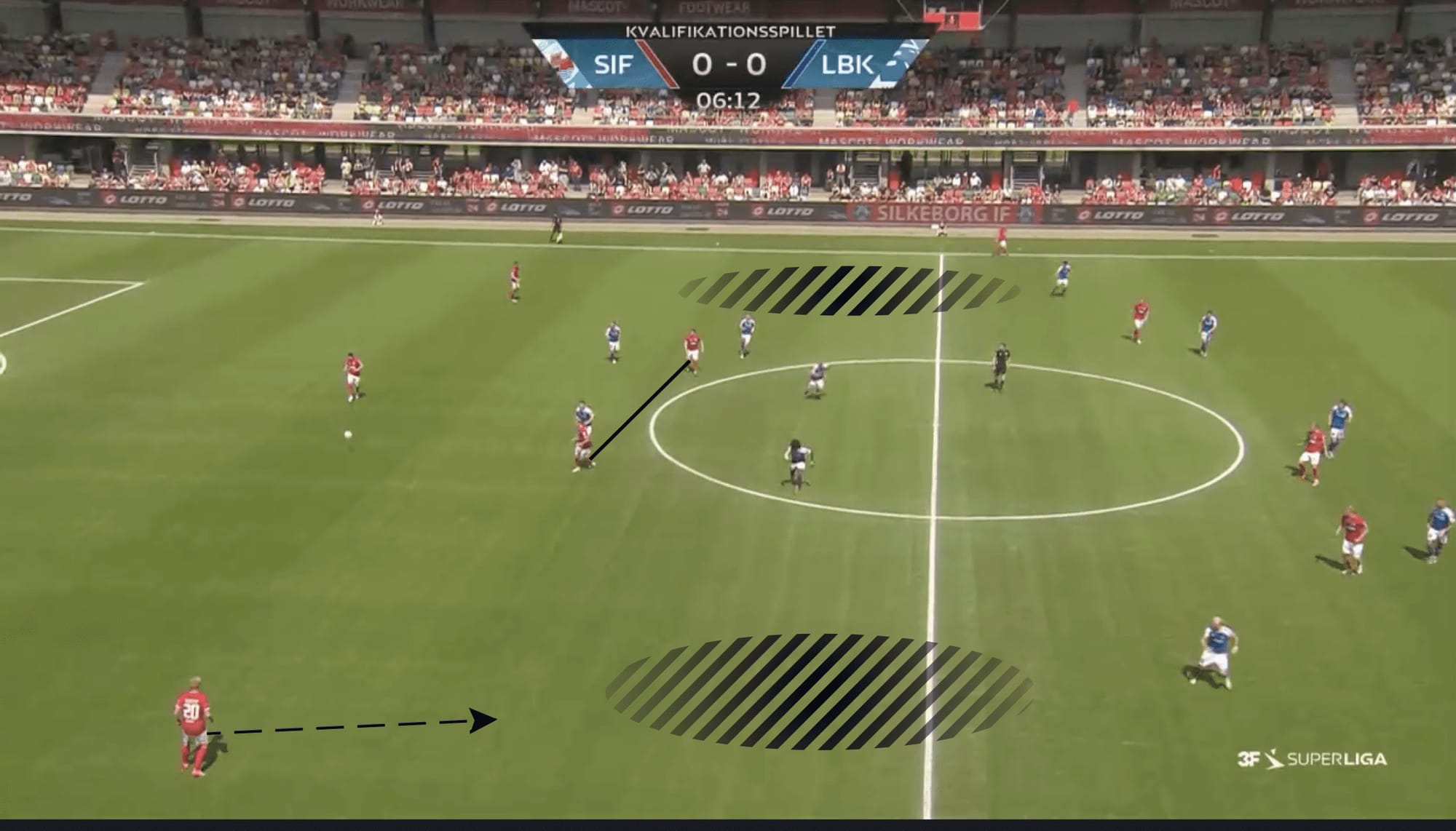
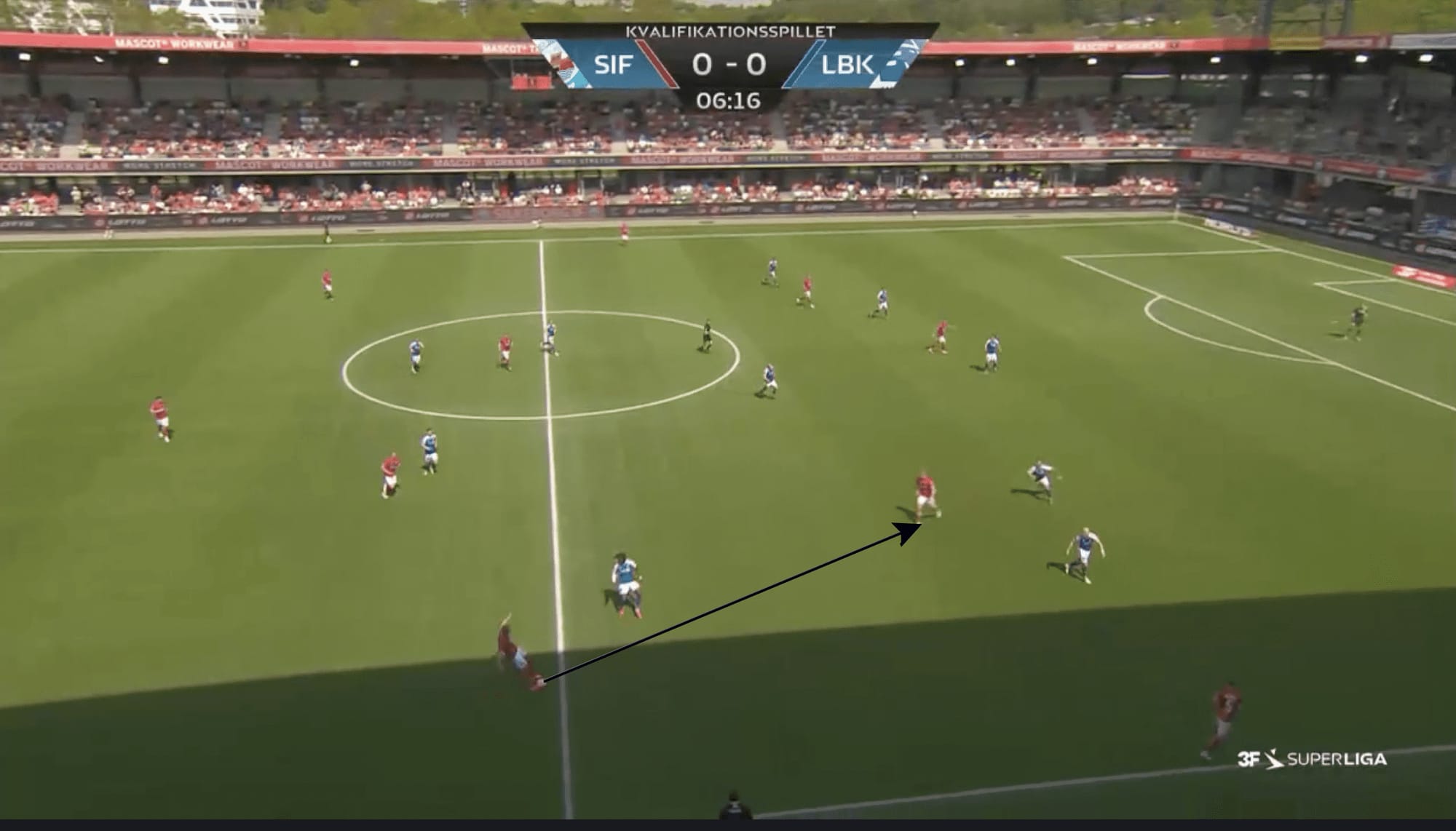
Structure in defence and attacking transitions
Silkeborg look to defend in a 4-3-3 with the side not looking to regain possession extremely aggressively with a PPDA of 17.44. As a result of this, their first line of defence does not press the opposition centre-backs unrelentingly but rather look to prevent passes into the centre of the pitch, with the left and right attacking midfielders covering the gaps between the midfield three behind them.
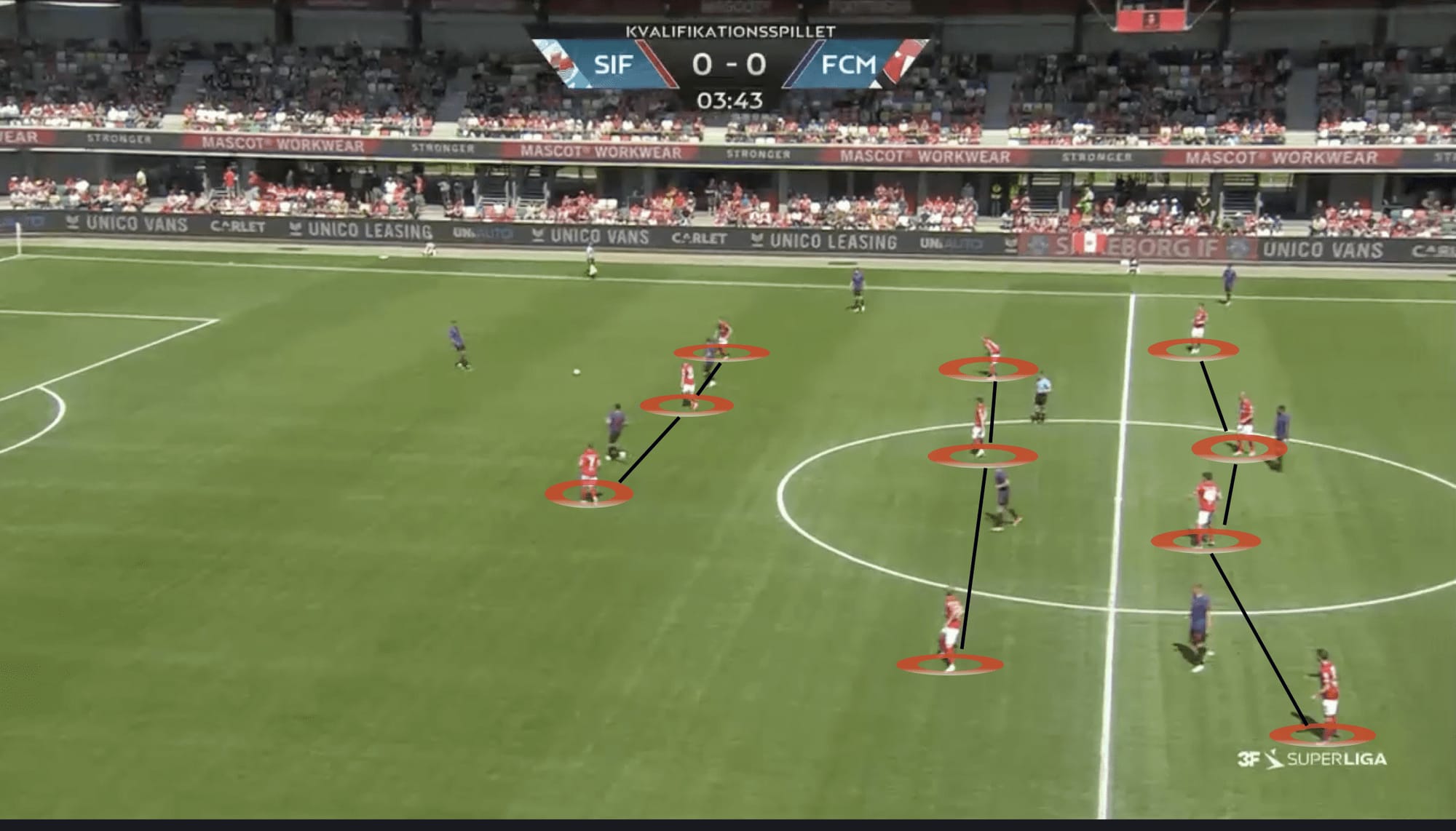
When the ball is played wide, either the two forwards in the first line look to press the player in the wide areas or one of the midfielders in the second line, with the rest of the midfielders shifting. When pressing in wide areas, if one of the midfielders presses the ball carrier, one of the forwards in the first line tends to drop deeper in order to cover for the pressing midfielder. As a result, it can be said that, generally, the side covers central and wide areas well and are able to stay compact in defence and cover spaces well for one another.
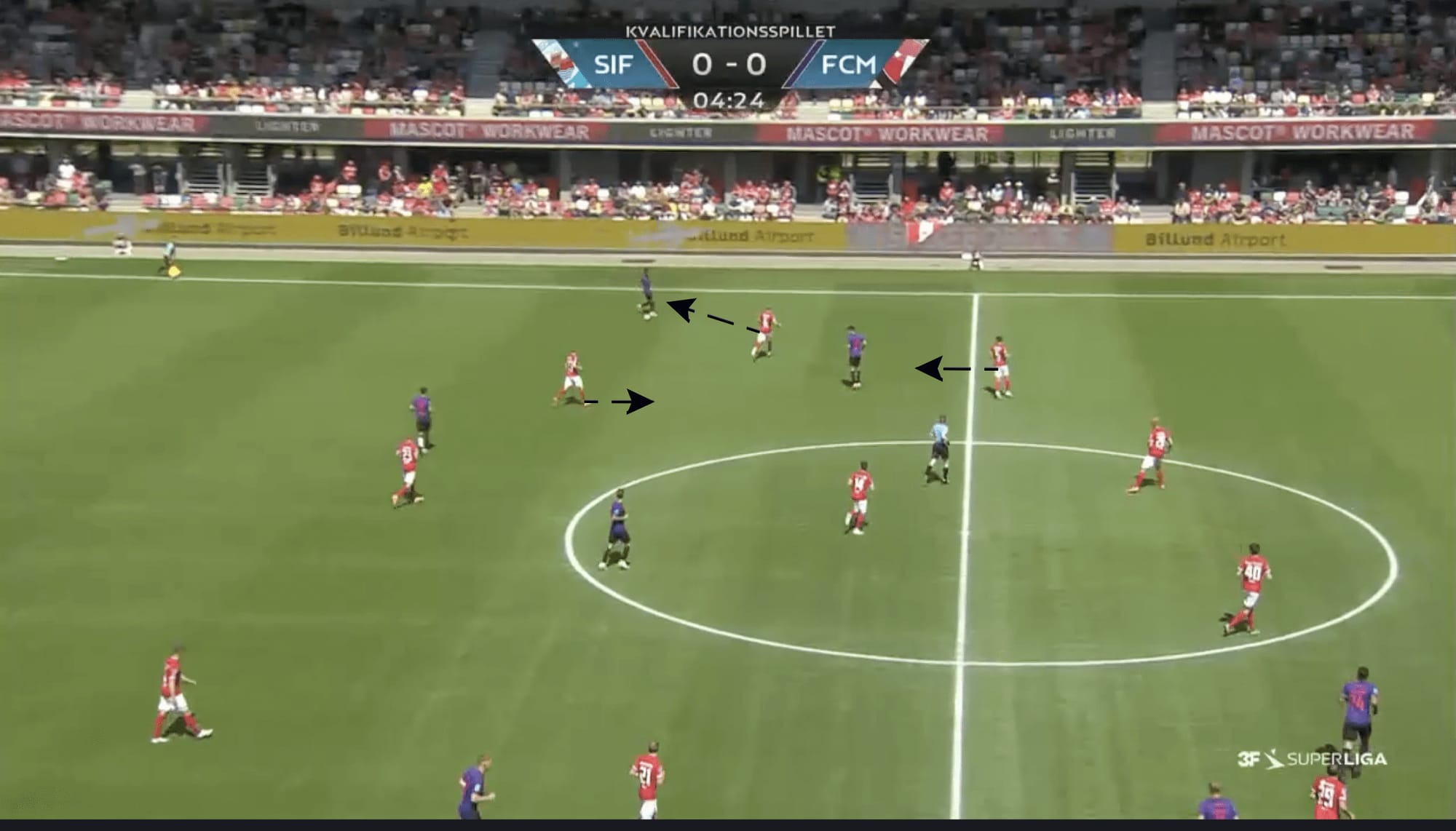
The use of three players in the first line of defence particularly aids the side in attacking transitions and acts as an additional means of chance creation as they have three players in advanced areas ready to receive the ball. This can be seen below.
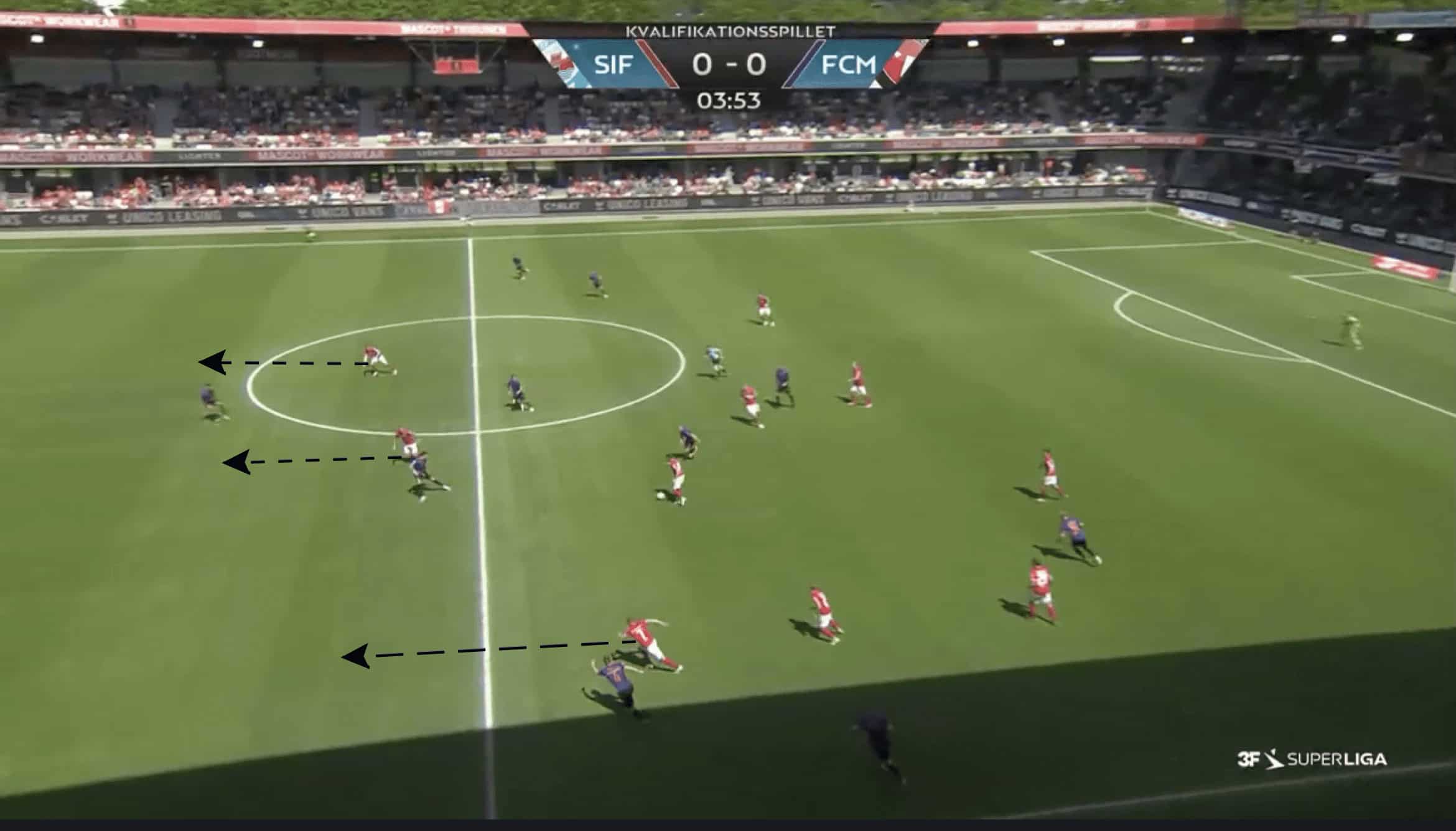
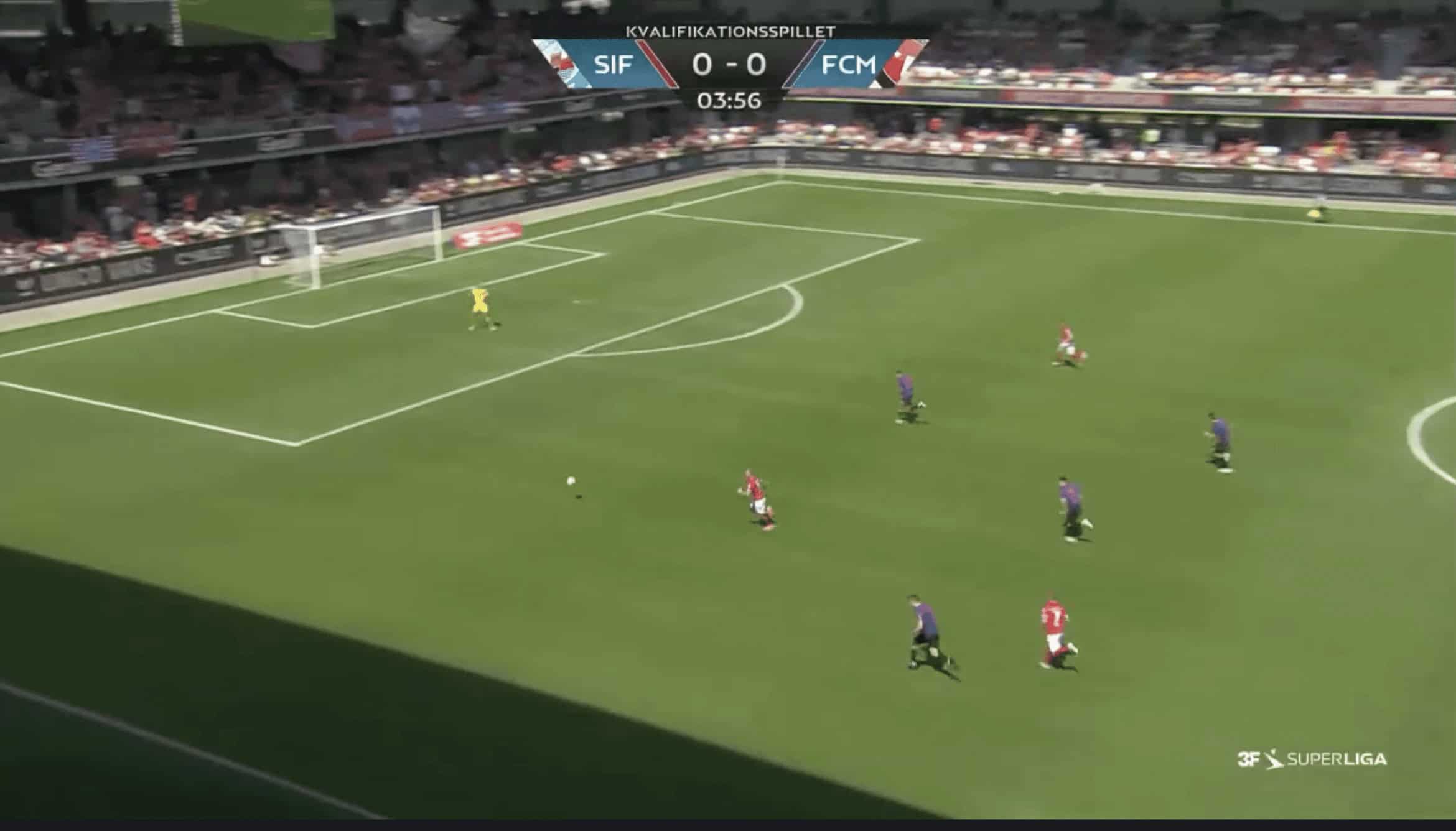
Due to the use of their three midfielders in the second line, it can be said that the side is vulnerable to quick switches of play from one wide area to the other. This is because the width of the pitch is difficult to cover with only three players in the midfield. However, this does not cause consistent problems to be labelled as a significant cause of their defensive frailties as they tend to recover well from these positions.
Generally, when defending, the side does not look particularly weak in their set defensive structure, which actually helps them create numerous 1v1 opportunities in attacking transition. However, their structure in attack may lead to more vulnerable situations.
Defensive weaknesses in attacking structure
As highlighted before, Silkeborg look to overload the centre and play with their full-backs in advanced areas. This creates a number of advantages in possession, however, it leaves them vulnerable from a rest defence perspective.
As can be seen in the example below, after losing possession in an advanced area, Silkeborg face a 4v4 in transition. However, due to the advanced position of their full-backs, opposition players are able to run into space on either side of the centre-backs. This is difficult to defend for the centre-backs, as covering either of the wide players results in leaving the central area even more exposed. From this position, the opposition were able to advance the ball through the centre before playing the ball to the left-hand side and then scoring
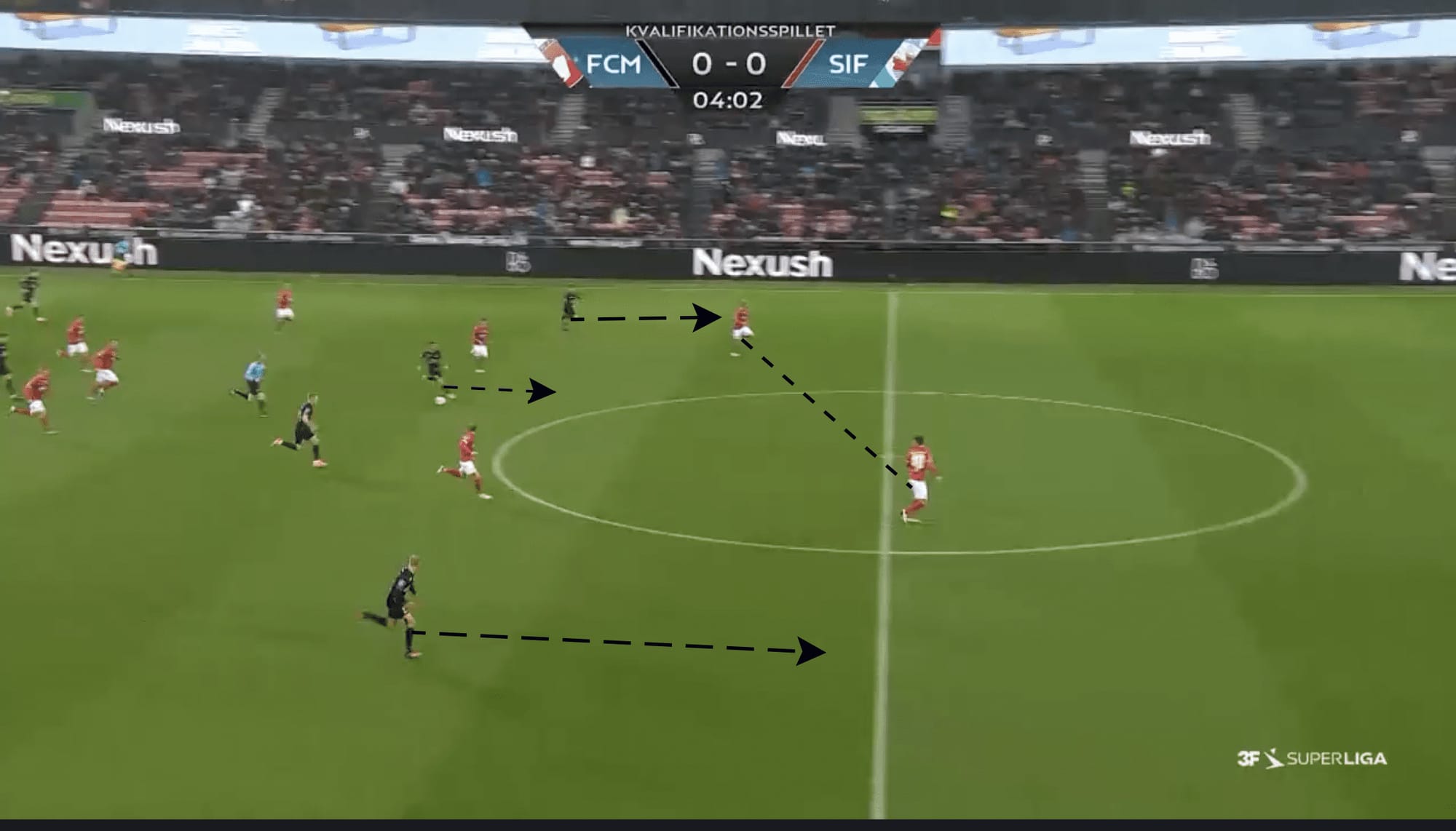
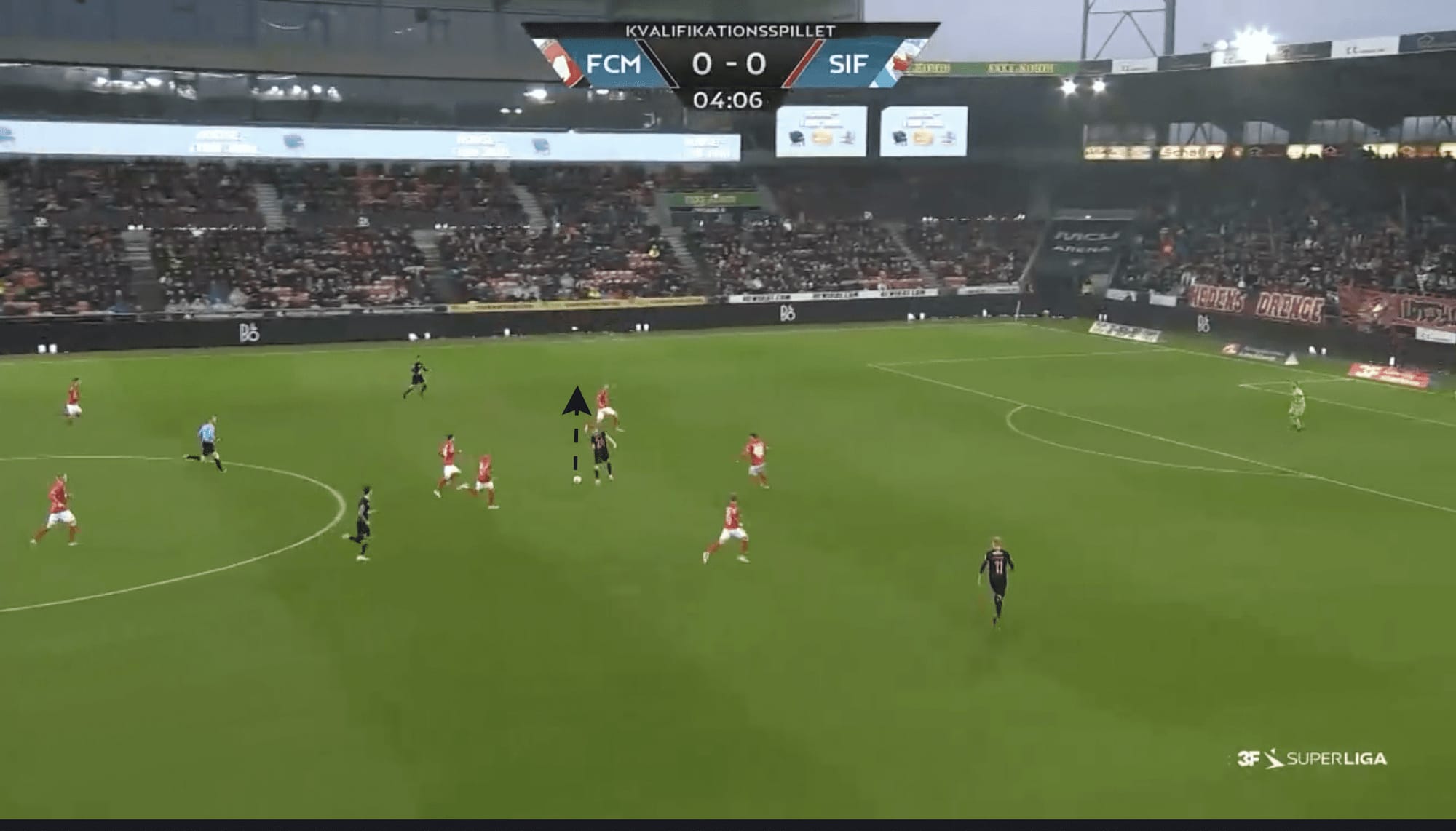

Conclusion
Overall, Silkeborg play a truly entertaining brand of football, with the side able to create high-quality chances on a consistent basis. In both attack and attacking transition, the team is able to play passes to their forwards that lead to one on one chances or chances inside the opposition box.
However, even though the side’s xG figure of 1.44 per 90 suggests they have only underperformed slightly in scoring from opportunities (46 goals instead of 44), when analysing the side, it becomes apparent that despite their chance creation, at times they squander good scoring opportunities. This is the case, particularly in one on ones against the keeper where their attackers have taken shots from outside of the box or on the edge of the area.
In addition to this, as explained in this analysis, their attacking play also comes at a cost in regard to their stability in defensive transition, with these factors contributing to the side’s league position this season.





Comments